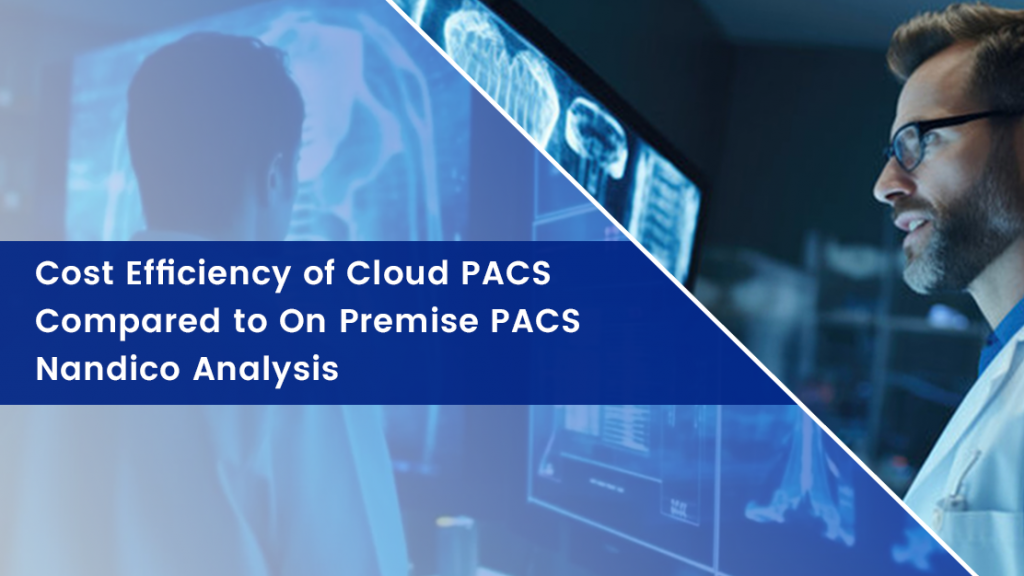In the rapidly advancing field of medical imaging, healthcare providers are increasingly evaluating cost efficiency when choosing between Cloud PACS and On-Premise PACS solutions. The choice impacts not only the hospital’s IT budget but also its ability to deliver timely diagnostics and maintain data security.At Nandico, we specialize in delivering Cloud PACS solutions that optimize costs without compromising performance. This article explores the financial advantages of Cloud PACS over traditional on-premise systems, backed by a detailed cost breakdown and analysis.
Upfront Capital Expenditure (CapEx)
On-Premise PACS requires significant initial investment in:- Servers and high-capacity storage arrays
- Networking hardware and infrastructure upgrades
- Dedicated physical space and cooling systems
- Software licenses with often complex, tiered pricing
- Zero or minimal CapEx, shifting spending to operational expenditure
- Immediate deployment without physical infrastructure procurement
- Flexibility to scale up or down based on usage
Operational Expenditure (OpEx)
On-Premise PACS carries ongoing costs such as:- IT staff salaries for maintenance and troubleshooting
- Electricity and cooling bills
- Hardware upgrades every 3-5 years
- Software maintenance contracts and version upgrades
- Backup and disaster recovery system management
- Infrastructure maintenance to the cloud provider
- Software updates and security patches handled automatically
- Disaster recovery and backups managed remotely
Scalability and Elasticity
On-premise PACS scalability involves:- Purchasing additional hardware and software licenses
- Potential downtime during upgrades
- Planning for peak capacity, which leads to underused resources in off-peak times
- Elastic scalability: scale storage and processing power instantly
- Pay only for what is used, reducing wastage
- No disruption during capacity expansion
Downtime and Productivity Costs
Unplanned downtime on on-premise systems leads to:- Loss of revenue due to halted imaging services
- Radiologist idle time or overtime costs
- Additional IT costs for emergency resolution
- Downtime is minimized due to redundancy and failover
- Continuous access from any location improves productivity
- Faster turnaround times can increase patient throughput
Data Security and Compliance Costs
Maintaining compliance with HIPAA, GDPR, and other regulations on-premise requires:- Investment in cybersecurity tools and protocols
- Regular audits and assessments
- Training for IT and clinical staff
Total Cost of Ownership (TCO) — A Comparative Summary
| Cost Factor | On-Premise PACS | Cloud PACS (Nandico) |
| Initial Investment | High (hardware, software, setup) | Low (subscription/pay-as-you-go) |
| Maintenance & Support | In-house IT, variable costs | Included in service fees |
| Scalability Costs | Hardware upgrades & downtime | Instant, no downtime, pay-per-use |
| Downtime Impact | High, costly | Minimal due to redundancy |
| Compliance & Security | Expensive internal processes | Built-in, automated |
| Disaster Recovery | Complex and costly | Included, geo-redundant |
Conclusion: Cloud PACS is the Smarter Financial Choice
Transitioning from on-premise to Cloud PACS can dramatically reduce both upfront and ongoing costs while increasing operational flexibility. With Nandico’s Cloud PACS, healthcare providers benefit from:- Lower capital expenditure
- Predictable operational budgets
- Rapid scalability
- Reduced downtime and related losses
- Enhanced security and compliance without extra cost
Post Views: 750
